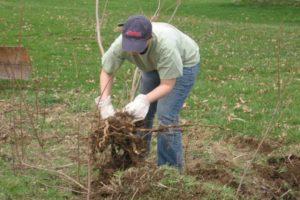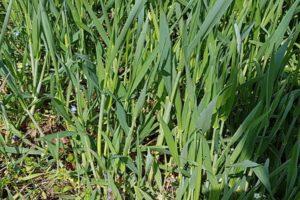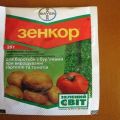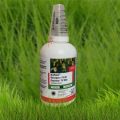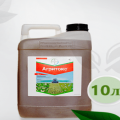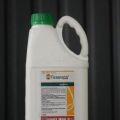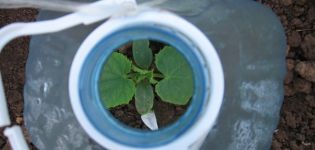Instructions for the use of the herbicide Glyphos from weeds
There is perhaps no more celebrated weed-killer than the herbicide Glyphos. It is adored by amateur gardeners in over 50 countries. What is the reason for the popularity of this tool? To understand, you need to carefully study the instructions for using the drug Glyphos from weeds. As it turned out, the main advantage is considered to be that it is a general herbicide.
Content
- 1 The composition and form of release of the herbicide Glyphos
- 2 The mechanism of action of the weed control
- 3 Indications for use
- 4 Benefits over other drugs
- 5 The period of plant death after treatment
- 6 Calculation of consumption and preparation of working solution
- 7 How to use the product correctly
- 8 Precautions for use
- 9 Toxicity
- 10 Compatibility with other products
- 11 How to store the product
- 12 Similar herbicides
The composition and form of release of the herbicide Glyphos
The active substance in the preparation is glyphosate isopropylamine salt. There is only an aqueous herbicide solution on sale.
They are produced in small bottles, for processing three acres (300 square meters), as well as in plastic ampoules for small areas, and so on.
- 500 grams of the drug is needed to process 10 acres.
- 120 grams - for 3 acres.
- 50 grams - one hundred square meters (100 square meters).
It is necessary to remember that the herbicide Grifos is a continuous action preparation!
The mechanism of action of the weed control
Glyphosate salt, getting on the plant, penetrates not only the leaves and trunks, but also the roots of weeds, thereby blocking biosynthesis and other functions. Weeds gradually begin to turn yellow, dry out and eventually die.

Indications for use
For the correct use of the product, you must carefully study the instructions. The herbicide is allowed to be used from early spring and after harvest. They are often used until late autumn, before the beginning of winter.
It is not necessary to weed, loosen the ground before spraying!
Benefits over other drugs
Glyphos has a number of advantages over similar herbicides.
- The product is effective, powerful, and gives excellent results.
- Resistant to sunlight and water.
- Mixes well with other herbicides.
- Non-toxic to humans, insects, fish, birds and animals.
- Decomposes in soil.
- Does not decompose in water.
- Has a shelf life of up to five years.
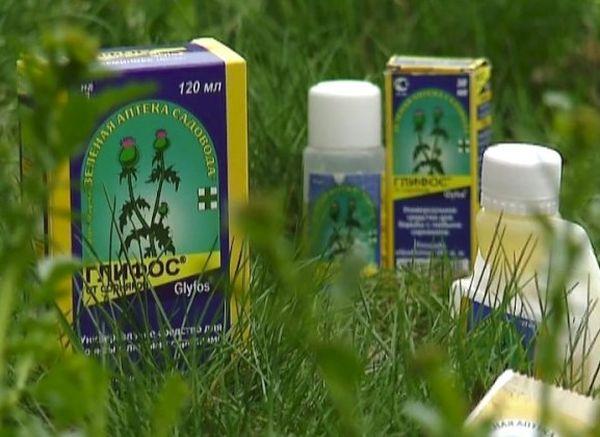
It is interesting! In the ground, the drug Glyphos decomposes into carbon dioxide, amino acids, phosphates. Meanwhile, in peat-rich soil, it can accumulate.
The period of plant death after treatment
After processing, the leaves of weeds begin to gradually turn yellow and wither. Within four or ten days, they die. Final dying occurs one month after spraying.
Calculation of consumption and preparation of working solution
A liter of solution is needed for twenty square meters of land. After treating the weeds, the remaining working solution must be poured out, since it cannot be stored for a long time.
The bottle itself has divisions, where each corresponds to ten milliliters. A working solution is prepared based on the type of plant.
To destroy perennial weeds, 12 milliliters of the herbicide is diluted in a liter of water. For annual weeds, you will need 8 grams of the drug per liter of clean water.
How to use the product correctly
The herbicide Glyphos has a toxic effect on cultivated plants. Therefore, if he accidentally falls on one of them, the leaves will need to be urgently washed with plenty of water.
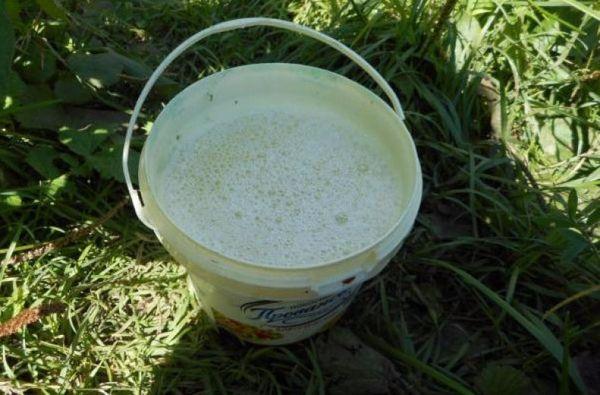
Sedge, dandelion, burdock, field horsetail and other herbs are "afraid" of it. You can use the tool both when planting a crop and during harvesting. After the first sprouts appear on the potatoes, they are immediately destroyed with a working solution.
The drug also works great when planting a lawn, it is often used a month before planting a sunflower. The land around fruit trees and vines is also cultivated with Glyphos.
Precautions for use
When the drug gets on the mucous membrane of the eye, pain and burning sensation occurs. Therefore, the processing should be carried out with goggles, headwear and closed clothing. The particles of the product are washed off with plenty of water.
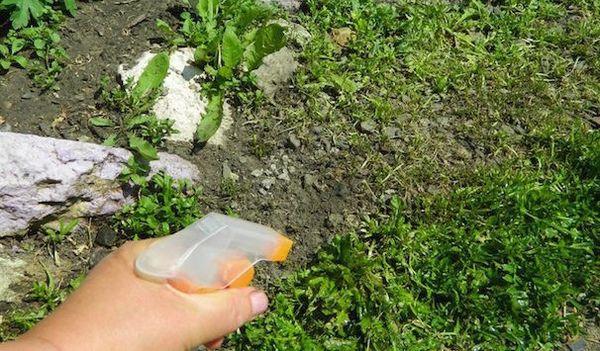
If it accidentally falls into a body of water or a stream, it can be carried by the current of water or by the wind for several meters. The chemical should not be used near children, pregnant or breastfeeding women, or people who are allergic to the drug.
Toxicity
In the soil, Glyphos is completely decomposed, therefore it does not affect the roots of plants. Its main effect is transferred to the leaves and stems of weeds. Therefore, it is not recommended to plant cultural seeds after processing the land with a working solution. It is also better to limit the flight of bees after spraying the plants for 12 hours.
Compatibility with other products
The product mixes well with other pesticides. Before use, they are mixed in a small container and checked for compatibility.
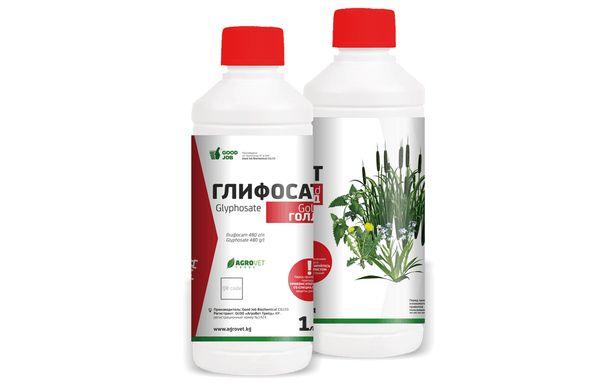
How to store the product
The herbicide is not afraid of temperature fluctuations. In a room where minus five degrees, it does not lose its properties. The same happens at plus 40 degrees of heat. The shelf life is five years.
Similar herbicides
Herbicides such as Arsenal, Hurricane Forte, Tornado, Round, Grounds, Zeus have the same functions as Glyphos. In other words, they are continuous chemicals.
